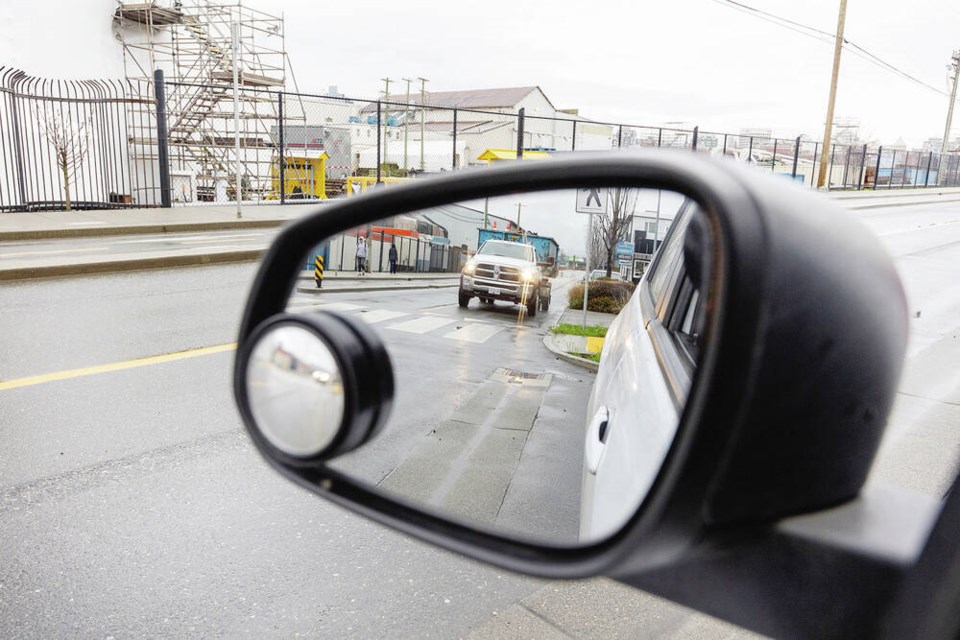I was reviewing some old driver training manuals a few days ago and came across some literature promoting the Smith System. Truckers and other professionals will recognize the name but for the majority of drivers that name probably doesn’t mean much.
Harold L. Smith, a Second World War U.S. Navy veteran, realized way back in the 1950s that driving schools of the day focused too much attention on training students around the basic human mechanics of operating a vehicle while paying too little attention to the environment in which drivers operated — in other words — being aware of what’s happening on the road. His five principles can make you a safer driver.
Smith established a driving school in 1952 and while the five principles of his system are widely used in the trucking industry, it applies to everyday user driving just as much.
Smith saw that drivers often lacked the proper amount of awareness of the road ahead and began with the principle of “aiming high” — looking much farther down the road than usual. This has the effect of looking into the future by training yourself to recognize hazards well in advance. Human eyesight is adapted to scan our environment at a walking pace. The era of the automobile now requires us to physically lift our vision out in front to spot dangers we were not originally designed to perceive.
Why are brake lights snapping on way up the road? Are other vehicles swerving or diverting ahead without explanation? These are warning signs to reduce speed and increase alertness. Heeding those signs gives you much needed reaction time before you arrive at the source of the problem.
Develop a “big picture mentality.” Constant side to side scanning of the whole roadway and its periphery — like sidewalks and driveways — not only maintains alertness but gives the brain more information about your driving environment. This includes checking your rear and side view mirrors every five to eight seconds to maintain the whole picture of the roadway.
Smith also taught the importance of keeping your eyes moving constantly while on the road. Driving can be monotonous at times, with the effect that our peripheral vision starts to decrease as we lose concentration. In the worst moments, we can enter into a trance-like state because of the lack of brain activity. The remedy is to keep your eyes moving, scanning every few seconds for hazards.
Ever been in a driving situation where you realized afterwards that if even the slightest problem happened the results would have been catastrophic? I’ve been there a few times. Smith saw the same problem and taught drivers to “leave yourself an out”. This means creating as much space around your vehicle as possible. Don’t follow too close. Stay out of others blindspots and do your best to leave space open on at least one side in front of you. It’s not always possible, but being boxed in means you basically have no escape options.
Finally, make sure others see you. Make eye contact with other drivers, pedestrians and cyclists as much as possible. The oblivious pedestrian is big problem in our area. Develop a mindset that they are going to walk out and wait until you make eye contact or get the wave acknowledging they see you. Don’t assume that because another car is signalling it’s actually going to turn. Keep all your vehicle’s lights working and use them all the time. I’m not a big advocate of horn honking but it’s entirely appropriate to use it when another road user needs to be alerted or to prevent a collision.
Advocates of the Smith system claim that these techniques have reduced collisions by 60 per cent for the people who use them. Whether that’s true or not is beside the point to me. They’re sound ideas, with no downside, if you are sincere about being a safer driver.
Glove Box: Did you pass the “Bring the Christmas Tree Home Safely Test” this year? About two-thirds of debris related crashes on the road come from insecure loads flying off vehicles. Insecure Christmas trees also cause a surprising amount of damage to vehicles — from twine which tears into door seals to severe paint scratches. So use the right vehicle such as a truck or van to move that 20-foot evergreen. Use proper tie downs and not twine. Secure the tree with the tip facing to the rear, then use a “tug test” to ensure it is truly secure. Then drive slowly and steadily until you make it home for that eggnog.



